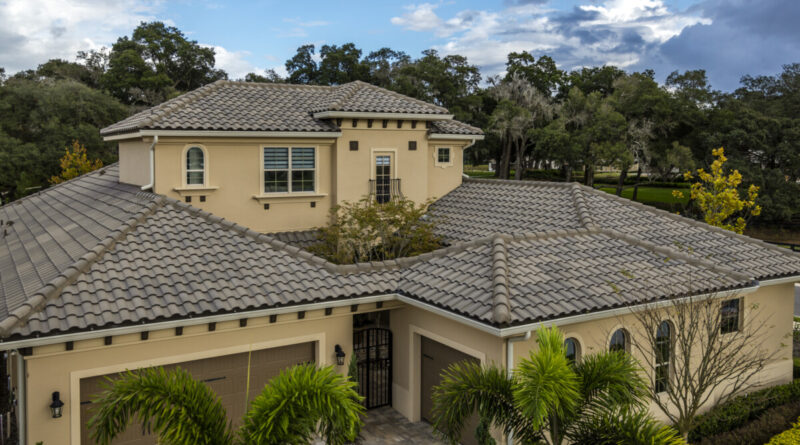Energy Savings
Concrete & Clay Tile Roofing Industry Adopts Energy as a Purchase Driver
by John Campbell, Vice President of Sales and Marketing, Eagle Roofing Products
During the three-plus decades that I have been active in the tile roofing industry I have watched concrete and clay roof tile manufacturers come and go. In retrospect, I have seen far more go or absorbed through market driven changes.
In comparison, the overall metal roofing space has expanded its offerings. Through low barriers of entry, and a wide variety of products from chicken coop grade panels, sold by box retailers, to high end beautiful copper standing seam panels typically marketed by quality focused vendors. This has given the metal roof segment greater opportunities to position their products as competition for the market of roof space. While I do not personally consider metal roofs to be a direct competitor to the longer life cycle performance of concrete and clay tile roof systems, I do welcome metal roofing as a competitor in the future roof segments of our industry, but I’m not a big fan of asphalt shingle roofs.
The popularity of concrete and clay tile roofing was driven in the 70’s and 80’s in large part due to fire concerns in the West. Originally established in 1971 as the National Tile Roofing Manufacturers Association, now the Tile Roofing Industry Alliance, worked closely with the Committee for Firesafe Dwellings to create legislation to ban combustible roofing materials in California. With the support of the Fire Marshals focus on fire and life safety issues, wood shakes were severely restricted from California almost overnight.
Over the next decade the concrete and clay tile industry grew tenfold throughout the United States as builders ceased installing flammable wood shake roofs and homeowners searched for safe and sustainable alternatives. During the surge of fire driven demand, the ascent of Mediterranean architecture that was once limited to pockets throughout Florida and Southern California gained popularity across the Sunbelt and provided further stimulus to the demand for concrete and clay tile roofing.
During the 90’s and early 2000’s flat concrete and clay tile roofs represented less than 25% of the industry’s shipments. In search of new consumer appeal, the architectural trends began to shift between 2010 and 2013. A renowned leader in residential design declared med is dead. His not so thinly vailed reference to the death of trent of Mediterranean designs inclusive of round windows, stucco facades and our round S tile roofs proved to be prophetic. The new trend towards homes deemed to be modern, contemporary, and farmhouse became the new norm over the last decade. In response the concrete and clay tile manufacturers invested in new technology, molds, and innovative products conducive to this dramatic market shift. Today, Eagle® Roofing Products’ flat tile sales represent 61% of our total shipments nationwide. While Mediterranean architecture is far from departed, it is no longer a significant driver of our industry’s success.
The threat of fires, hail, wind, and the prevalence of Mediterranean architecture coupled with unmatched permanence and superior curb appeal has driven demand for the concrete and clay tile industry for nearly 50 years.
So, what’s next? While we cannot predict the advent of another external driver of demand, as an industry we can develop strategies to strengthen our brand. Under the umbrella of the Tile Roofing Industry Alliance, our major manufacturers of concrete and clay roofing tiles in the United States have commenced a long-term field study to validate the superior energy saving attributes of our tile systems compared to other products. The research project deemed Tile Roofing Energy Cost Savings (TRECS) includes the construction of 41 roof uniform stations, placed in the ten code defined climates zones across the country.
Through the use of revolutionary sensors, strategically placed at layers of the roofing assembly, we will gather real time data every ten minutes over a three-year period. This will allow the industry to publish and post live temperature deltas from our roof tiles to shingles and metal, which occur at the roof surface, heat flux through the roof deck, the attic and inside the living space. Our benchmark will be asphalt shingle roofs versus concrete and clay tile roofs in different installation configurations.
In addition to measuring temperature deltas, we will be able to convert the data into cumulative energy usage to maintain a constant temperature for both products. This will also validate our roofing tiles ability to provide energy reduction through our thermal mass and airspace that will benefits far greater that the surface color of other materials. In regions with tiered electricity, it can help move the expensive peak demand times in hot regions and reduce heat loss in the winter months for colder climates. In the end, the TRECS Study will justify and validate the long-term benefits of spending a little more upfront costs to save energy costs eternally. Together, we will create and market a new purchase driver that will drive demand for concrete and clay tile roofing: energy savings.

